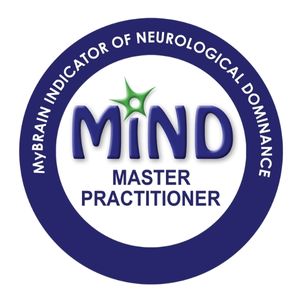From the first time I learnt about it, I was fascinated by the MiND profiling tool from MyBrain International, as it is the first of its kind to be based on neuroscience, and helps us understand our professional and personal thinking preferences.
This is why earlier this year I qualified as a practitioner in Applied Neuroscience for People Development with the organisation.
I now use the profiling tool as part of my coaching and training programmes to help my clients understand their brains better and explore their own thinking preferences. This leads us to discover their natural approaches to communication, and what this means for how they interact with others, especially with people who seem to have very different styles or approaches.
My ultimate objective is to help my clients to have an insight into how others think, so they can develop a more ‘whole-brained’ approach to be more successful in how they communicate, connect and build relationships.
So, here I am sharing today more about the different profiles and how they build their conversations, so you can see how this might apply to how you communicate and work.
There are four key areas and the thinking styles associated with them form the basis of our thinking preferences, including the way we communicate, listen, make choices, influence and persuade others, connect and build relationships. We have the ability to tap into all of the thinking styles, it is just that we may have one, two, even possibly three which are more dominant and where we spend most of our time operating, so we feel most ‘in flow’ when thinking in this way.
You may even start to recognise yourself in one of these topline descriptions below. However, what is important to understand is that there is no good or bad, right or wrong thinking preference to have, there are only different ways of thinking and viewing the world. In fact, the MiND tool looks at individual energy and motivations, and is not a way to measure skills or competencies.
The four key thinking preferences are Reasoning, Feeling, Spontaneous and Specific.
Reasoning: tend to be rational, practical, realistic and analytical.
Feeling: usually more emotional, empathetic, focused on other people, intuitive and sensitive to others.
Spontaneous: can be creative, imaginative, strategic, curious and ‘big picture’ thinkers.
Specific: typically precise, detailed and highly organised. Perfectionists and completers.
Once we understand that our thinking preferences drive our energy and motivations, then we can see that each profile would have a very different approach when talking to each other, for example when working together in a project team, in a meeting or when presenting or pitching. They each have their view on the best way to share ideas, get people to support them, and what is ‘important’ when working in a team.
Each profile metaphorically sees the world through their own pair of glasses, so if we mistakenly assume everybody operates and communicates the same way as we do, we may quickly run into miscommunications, frustrations and misunderstandings. All because we think others are ‘wearing the same pair of glasses’ as us.
On the other hand, if we listen carefully to the type of language that others use, then we can interpret what their thinking preference might be, and be more successful in connecting with them by adapting our own communication approach and choice of language.
Here are just a few examples of the type of language or communication style which each thinking preference profile might use:
Reasoning: facts, helicopter view, ‘logically’, ‘if we take a step back….’, focused on the tangible reality and ‘what’.
Feelings: ‘my gut feel tells me..’, ‘I feel….’, ‘How do you/ we feel about this?’, team harmony, subjective, compassionate, collaboration, supportive, interpreting body language, focused on ‘who’.
Spontaneous: ideas, stories to illustrate points, may change the topic of conversation frequently, speculates, ‘potentially’, vague, future-oriented, lots of ideas at the same time, ‘what if…?’, focused on ‘why’.
Specific: details and data, want to complete their sentences without interruption, processes, methodical, step by step, agendas, follow-ups, focused on ‘how’.
As you can see from this, their priorities in communication could be very different and to be successful in working together in a team, or connecting with somebody with a very different preference to you, then you could plan to tap into communication and language which makes most sense for them. It also can support more effective teamworking and ensure that you are fully appreciating the diversity of others’ strengths and preferences, even if they are very different to your own.
I hope this brief introduction to the MiND neurometric profiling tool has sparked your curiosity!
If you would like to find out more about what an insight into the neuroscience of communication could do for you or your team to work more productively, and take the profile yourself, please contact me.





